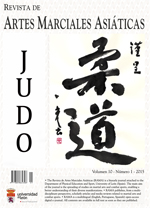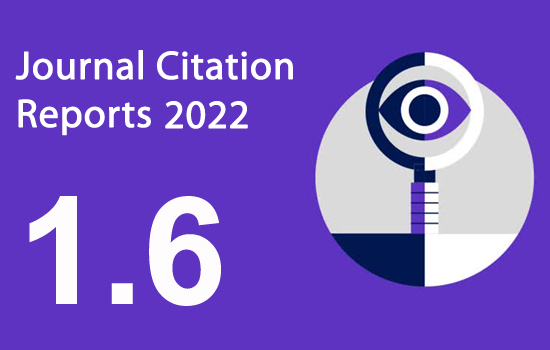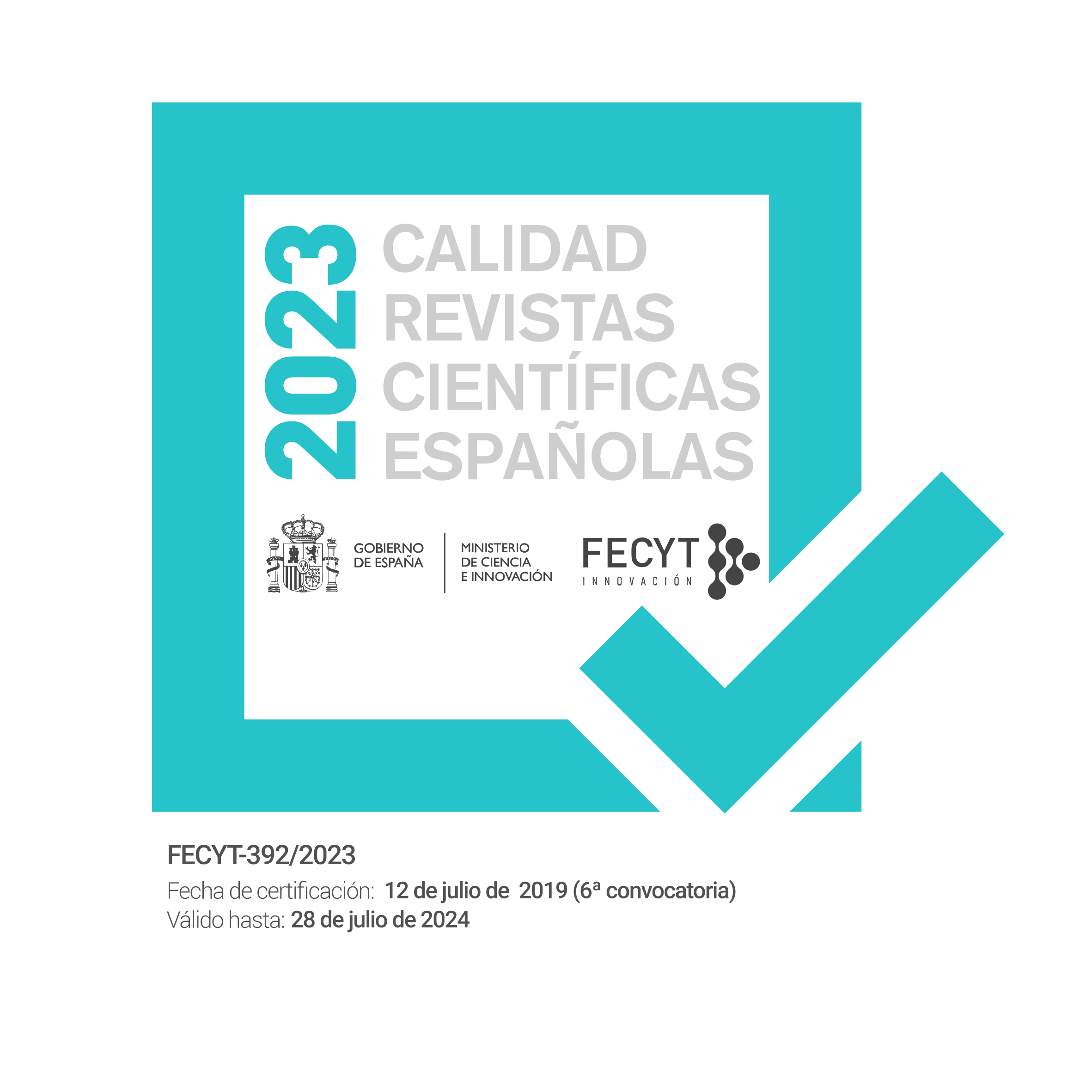Esgrima india y persa: un análisis comparativo
DOI:
https://doi.org/10.18002/rama.v10i1.1499Palabras clave:
Artes marciales, India, Persia, espada, cultura india, cultura y lengua persa, esgrima india, esgrima persaResumen
La interconexión cultural entre Irán y el norte de la India, que existió y se desarrolló durante un largo período, se conoce hoy en día como “indo-iraní” o “indo-persa”, que podría aplicarse a la región, cultura, literatura, armas y a otras esferas de intervención intercultural. La cooperación cultural entre estos dos países fue bilateral y estuvo marcada por las rutas comerciales. Este artículo analiza la interrelación, similitudes y diferencias entre las culturas marciales y militares de la India y Persia. Más precisamente, el artículo describe el campo de la formación individual en habilidades militares, métodos para su adquisición y retención, así como el uso de las armas relacionadas con dicha formación. Para lograr este objetivo, se llevó a cabo un análisis comparativo basado en fuentes históricas y en literatura contemporánea sobre el tema. En primer lugar, el artículo describe los principios generales y las tradiciones de armas en ambas culturas. La siguiente sección muestra algunas de las técnicas de esgrima persa descritas en los manuscritos. La siguiente parte describe algunos aspectos de la esgrima india. Por último, se refieren algunas similitudes y diferencias de las técnicas de esgrima en ambas tradiciones. Debe subrayarse que, aunque existen muchos manuscritos persas sobre técnicas de combate, no hay manuscritos indios sobre la temática, o no se han encontrado hasta la fecha. Este artículo es sólo una etapa inicial de investigación.Descargas
Métricas alternativas
Citas
Ālam Ārāye Šāh Tahmāsp [World Ornamentation of King Tahmāsp] (1991). Zendegāni-ye Dāstāni-ye Dovomin Padešāh-e Doreye Safavi [The Narrative Biography of the Second Safa. Edited and Annotated by Iraj Afšār. Tehrān: Entešārāt-e Donyāye Ketāb.
Al-Jāmi, M. (2001). Tārix-e Ahmad Šāhi [History of Ahmad Šāh]. Edited and commented by P. S. Homāyun. Pašāvar: Dāneš Xaparanduye Tulne.
Al-Kāteb al-Rajāni, F. (2004). Samak Ayyār. Annotated by Seyyed Ali Šahāri. 2 Vols. Tehrān: Sedāy-e Moāser.
Asadi Tusi, H. (1938). Garšāsbnāme [Letter of Garšāb]. Annotated by H. Yaqmā'i. Tehrān: Ketābforuši va Čāpxāne-ye Baruxim.
Āsef, M. H. (2003). Rostam al Tavārix: Salatin-e Selseleye Safaviye, Afšāriye, Zandiye va Qājāriye [Rostam al Tavārix: The Sultans of Safavid, Afšārid, Zand and Qājār]. Annotated by A. Alizādeh. Tehrān: Entešārāt-e Ferdos.
Ayeen Akbery [The Institutes of the Emperor Akber]. (1800). Translated by F. Gladwin, Vol. 1, London: O. Avld, Greville Street.
Bahari, E. (1996) Bihzad: Master of Persian Painting. London & New York: I. B. Tauris Publishers.
Beyhaqi Dabir, A. (2004). Tārix-e Beyhaqi [The Historyof Beyhaqi]. Annotated by A. Fayyāz. Mašhad: Danešgāh-e Ferdŏsi Mašhad.
Beyqami, M. M. (2002). Dārābnāme [Book of Dārāb]. Corrected and Annotated by Z. Safā. 2 Vols. Tehrān: Šerkat-e Entešārāt-e Elmi va Farhangi.
Blake, S. P. (2002). Shahjahanabad: The Sovereign City in Mughal India 1639-1739. Cambridge: Cambridge University Press.
Bosworth, C. E. (2004). The new Islamic Dynasties: A Chronological and Genealogical Manual. (2nd Ed.) Edinburgh: Edinburgh University Press.
Chardin, J. (1988). Travels in Persia 1673-1677. New York: Dover Publications.
Dāstān-e Hosseyn Kord-e Šabestari [The Story of Hosseyn Kord-e Šabestari] (2003). Annotated by A. Šabgāhi Šabestari. Tehrān: Mo'aseseye Entešārāt-e Farahāni.
Dehxodā, A. A. (2006). Digital Lexicon of Dehxodā . Tehran: University Press..
Egerton, W. (1896). Indian and Oriental Arms and Armour. London: W. H. Allen & Co.
Falsafi, N. (1996). Zendegāni-ye Šāh Abbās [The Biography of Šāh Abbās]. 5 Vols. Tehrān: Čāpxāne-ye Mahārat.
Farquhar, J. N. (1925). The Fighting Ascetics of India, Bulletin of the John Rylands Library, 9, 431-452.
Ferdŏsi, H. A. (2005). Šāhnāme Ferdŏsi (bar Asās-e Nosxeye Mašhur-ebe Čāp-pe Mosko) [Book of Kings byFerdŏsi (Based on the Manuscript Known as Published in Moscow)]. Tehrān: Entešārāt-e Alam.
Frye, R. N. (1989). The Golden Age of Persia. London: Butler & Tanner Ltd.
Hakim, M. (Unspecified date). Koliyāt-e Haft Jeldi Eskandarnāme: Sāhebqarān Zowalqareneyn Eskandar ben Dārāb ben Bahman ben Esfandiyār Ru'intan [The Complete Seven Volumes of the Book of Alexander: Sāhebqarān Zowalgareneyn Alexander, the Son of Dārāb, the Son of Bahman, the Son of the Invulnerable Esfandiyār]. From the Series of Legends of Oriental Pahlavān. Tehrān: Entešārāt-e Mohammad Hasan Sar Elmi.
Heber, R. (1843). Narrative of a Journey Through the Upper Provinces of India in 1824-5. Vol. II. London: John Murray.
Irvine, W. (1903). The Army of the Indian Moghuls. London: Luzac & Co.
Kāšefi Sabzevāri, M. (1971). Fotovvatnāme-ye Soltāni [Royal Book/Letter of Chivalry]. Commented by Mohammad Ja’far Mahjub. Tehrān: Entešārāt- Bonyād-e Farhang-e Irān.
Khorasani, M. M. (2006). Arms and Armor from Iran: The Bronze Age to the End of the Qajar Period. Tübingen: Legat Verlag.
Khorasani, M. M. (2009a). Las técnicas de la esgrima persa. Revista de Artes Marciales Asiáticas, 4(1), 20–49.
Khorasani, M. M. (2009b). El combate con armas blancas cortas en la esgrima persa. Revista de Artes Marciales Asiáticas, 4(2), 38– 53.
Khorasani, M. M. (2010a). Lexicon of Arms and Armor from Iran. A Study of Symbols and Terminology. Tübingen: Legat Verlag.
Khorasani, M. M. (2010b). La lucha: una parte integral de las artes marciales de combate en Irán. Revista de Artes Marciales Asiáticas, 5(2), 64–76.
Khorasani, M.M. (2013). Persian Archery and Swordsmanship: Historical Martial Arts of Iran. Frankfurt am Main: Niloufar Books.
Kinsley, D. A. (2012). British Sword Fighting. Self Publication (Standard Copyright License).
Kolff, D. H. A. (2002). Naukar, Rajput, and Sepoy. The Ethnohistory of the Military Labour Market of Hindustan, 1450-1850. Cambridge: Cambridge University Press.
Kurochkin, A. Y. (2014). Курочкин А.Ю., «Холодное оружие в традиционной воинской подготовке в Индии в 1500-1800 годах». Война и оружие. Новые исследования и материалы. Труды Пятой Международной научно-практической конференции. 14-16 мая 2014 года, часть II, 478-488, ВИМАИВиВС, Санкт-Петербург, 2014 (Kurochkin A. “Cold weapons in traditional military practices in North India duering 1500-1800”. “Warfare and weapons. New researches and materials”. Materials of 5th International Science-practical conference. 14-16th May 2014, part II, 478-488, Military-Historical Museum of Artillery, Engineer and Signal Corps, Russia, St. Petersburg).
Luijendijk, D. H. (2006). Zoor Khane: History and Techniques of the Ancient Martial Arts of Iran. Boulder: Paladin Press.
Marshall, D. N. (1985). Mughals in India: A Bibliographical Survey of Manuscripts. London: Mansell Publishing.
Mobārak Šāh Faxr-e Modabbar, M. (1967). Ādāb al-Harb va al-Šojā-e [The Customs of War and Bravery]. Annotated by A. Xānsāri. Tehrān: Eqbāl.
Modarresi, Y., Sāmei, H., & Safavi Mobarhen, Z. (1991). Farhang-e Estelāhāt-e 29) Doreye Qājār: Qošun va Nazmiye [The Lexicon of the Expressions of the QājārPeriod: Army and Military]. Tehrān: Daftar-e Pajuhešhāye Farhangi.
Mohammad Qāsim, H. Sh. (1910). History Rise of the Mahomedan Power in India till the Year A.D. 1612. Vol. III. Translated by J. Briggs. London: Kegan Paul, Trench, Trubner & Co.
Mostufi, H. (1999). Zafarnāme be Enzemām-e Šāhnāme Abolqāsem Ferdŏsi [Book of Victories together with Book of Kings Abolqāsem Ferdŏsi]. With an Introduction by Dr. Nostratollāh Rastegār. Tehrān: Markaz-e Našr-e Dānešgāhi.
Munday, G. C. (1832). Pen and Pencil Sketches. Being the Journal of a Tour in India. Vol. II. London: John Murray.
Nāderi, A. (1968). Zafarnāme [Book of Victories]. Introduction by M. Farrox. Tehrān: Entešārāt-e Ketābxāne-ye Melli-ye Mālek.
Nitin, S. (2008). Mobility, Control and Criminality in Early Colonial India, 1760s–1850s. The Indian Economic and Social History Review, 45(1), 1–33
Nur-ud-din Mohammad Salim (1909). Tuzuk-i-Jahangiri or Memoirs of Jahangir. Translated by A. Rogers. London: London Royal Asiatic Society.
Pinch, W. R. (2006). Warrior Ascetic and Indian Empires. Cambridge: Cambridge University Press.
Rašidoldin Fazlollāh Hamedāni, A. (1985). Jāme–al Tavārix (Az Aqāz Peydayeš Moqol Ta Pāyān Doreye TeymurQā’ān) [The Complete History (From the Emergence of the Mongols until the End of the Era of Timur)] Written in 703 Hegira (1304 C.E.). Annotated by B. Karimi. Tehrān: Entešarat Eqbāl.
Rawson, P. S. (1967). The Indian Sword. Copenhagen: Danish Arms and Armour Society.
Romuz-e Hamze [Secrets of Hamze] (1940). Anonymous Author. Handwritten by Mohammad Ali Nāme. Tehrān: Šerkat-e Tab-e Ketāb.
Sabā, F. Šahanšahnāme [Book of King of Kings]. Undated and Handwritten Manuscript. Mašhad: Āstān-e Qods-e Razavi.
Šabānkāre’i, M. (2002). Majma’ al-Ansāb (Nimeye Avval) [Complete Collection of Peoples (First Part)]. Commented by Mir Hāšem Mohaddes. Tehrān: Entešārāt-e Amir Kabir.
Sharar, A. H. (1994). Lucknow, the Last Phase of an Oriental Culture. Oxford: Oxford University Press.
Širuye Nāmdār [The Famed Širu] (2005). Anonymous Author. Tehrān: Entešārāt-e Qoqnos.
Spilsbury, J. (2008). The Indian Mutiny. London: Orion Publishing Co.
Sprenger, A. (1896). Report of the Researches into the Muhammadan Libraries of Lucknow. Calcutta: Office of the Superintendent of Government Printing.
Stevenson, W. F. (1898). Wounds in War. New York: W. Wood & Company.
Tartusi, A. T. (2001). Abu Moslemnāme [Book of Abu Moslem]. Annotated by H. Esmā'ili. 4 Vols. Tehrān: Entešārāt-e Moi’n, Našr-e Qatre, Anjoman-e Irānšenāsi dar Irān.
Thomson, N. D. (1893). The curved sword in the native cavalry. Journal of United Service Institution of India, XXII, 102.
Xusofi Birjandi, H. (2002). Xāvarānnāme [Book of the East]. With an Introduction by S. Anvari. Tehrān: Sāzmān-e Čāp va Entešārāt.
Yazdi, M. Š. (1957). Zafarnāme (Tārix-e Umumi-ye Irān dar Doreye Teymuriyān) [Book of Victory (The General History of Iran during Timurid Period)]. Corrected and Annotated by Mohammad Abbāsi. Tehrān: Amir Kabir.
Descargas
Publicado
Cómo citar
Número
Sección
Licencia
Derechos de autor 2015 Aleksey Kurochkin, Manouchehr Moshtagh Khorasani

Esta obra está bajo una licencia internacional Creative Commons Atribución-NoComercial-CompartirIgual 4.0.
Los autores que publican en esta revista están de acuerdo con los siguientes términos:
- Los autores ceden de forma no exclusiva los derechos de explotación (reproducción, distribución, comunicación pública, transformación) a la Universidad de León, por lo que pueden establecer, por separado, acuerdos adicionales para la distribución no exclusiva de la versión de la obra publicada en la revista (por ejemplo, alojarlo en un repositorio institucional o publicarlo en un libro), con un reconocimiento de su publicación inicial en esta revista.
- Este trabajo se encuentra bajo la Creative Commons Attribution-NonCommercial-ShareAlike 4.0 International License. Puede consultarse desde aquí la versión informativa y el texto legal de la licencia.
- Se permite y se anima a los autores a difundir electrónicamente las versiones pre-print (versión antes de ser evaluada) y/o post-print (versión evaluada y aceptada para su publicación) de sus obras antes de su publicación, ya que favorece su circulación y difusión más temprana y con ello un posible aumento en su citación y alcance entre la comunidad académica.











